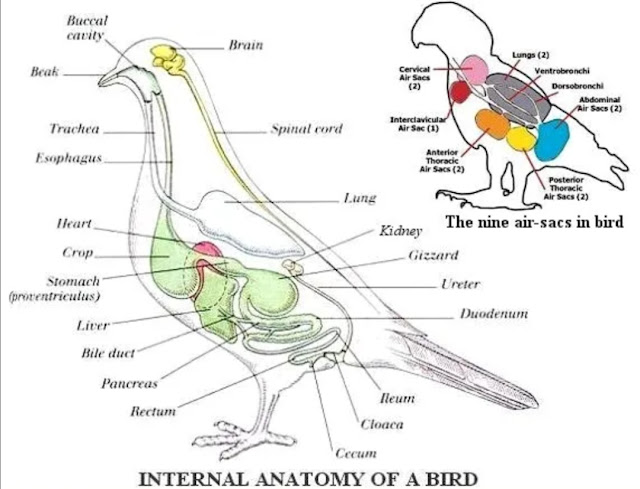Digestive System of Birds (Aves) and their Functions
Digestive System of Birds (Aves) and their Functions – Birds (Aves) are vertebrate animals that have a digestive system, such as chickens, ducks, and other birds composed of digestive tracts and glands. The bird's digestive system is very simple to get energy quickly and make an adaptation to certain organs in reducing body mass.
The digestive tract of birds, includes the oral cavity, esophagus, crop, stomach, gizzard, small intestine, large intestine and klaoka.
Also read: Benefits of Omega 3 for Cats
A. The digestive system of birds is divided into 3, namely:
1. Mechanical Digestive System
Mechanical digestion in birds occurs in the oral cavity with the help of the tongue, which will push food into the esophagus. Then from the esophagus to the cache and to the gizzard.
2. Enzymatic Digestive System
The digestive system enzymatically occurs in the mouth with the help of the enzyme ptyalin, in the stomach with the help of hydrochloric acid, in the small intestine with the help of enzymes produced by the prankreas.
3. Biological Digestive System
The digestive system is biologically assisted by bacteria, or what is called microbiology, usually occurring in the large intestine.
B. Order of the Digestive System in Birds
1. Oral Cavity
In the oral cavity, feed is mixed with saliva and salivary enzymes (Saliva). Saliva functions as a lubricant and also as an enzyme in the enzymatic digestion process.
2. Cache (Crop)
The cache (crip) is in the end of the throat, the throat is the connecting channel between the oral cavity and the stomach. In this section the feed does not undergo any digestion process, the feed only passes through this channel. The cache also functions as a place to store food and drinks.
3. Stomach (Proventriculus)
In the stomach will experience the process of enzymatic digestion with the help of gastric juice. Lamb will produce enzymes pepsin, renin and hydrochloric acid (HCL). The main function of the stomach is to store food and digest food.
4. Gizzard (Gizzard)
In the ampel, the feed crushing process occurs which is assisted by grit. Grit is generally in the form of pebbles / small stones, broken glass, crushed shells etc. This grit helps the gizzard in crushing the feed into small particles so that the surface of the feed is easier to digest and more broadly accepts the penetration of digestive enzymes.
5. Small Intestines
The small intestine in birds is made up of the duodenum, jejunum and ileum. In the duodenum the process of absorption of food occurs. The digestive process of the small intestine is assisted by pancreatic enzymes, bile and intestinal enzymes. Bile functions to emulsify fat and activate lipase and hydrolyze fat. The main function of the intestine is to protect the duodenal wall from the effects of the acidic atmosphere of the stomach.
6. Large Intestines
In the large intestine there are still feed substances that have not been digested and are not absorbed by the small intestine, such as cellulose and hemicellulose. Most of the water will be absorbed in the large intestine, then it will empty into the rectum and will be expelled through the cloaca.
7. Cloaca
Birds and some other vertebrates do not have an anus, but have a passageway called a cloaca. The cloaca is the last digestive system, which is a place of disposal from the urinary tract, reproductive tract and digestive tract.
Thus information about the Bird Digestive System (Aves) and its Functions. Hopefully the above article can be useful and useful.


Post a Comment for "Digestive System of Birds (Aves) and their Functions"